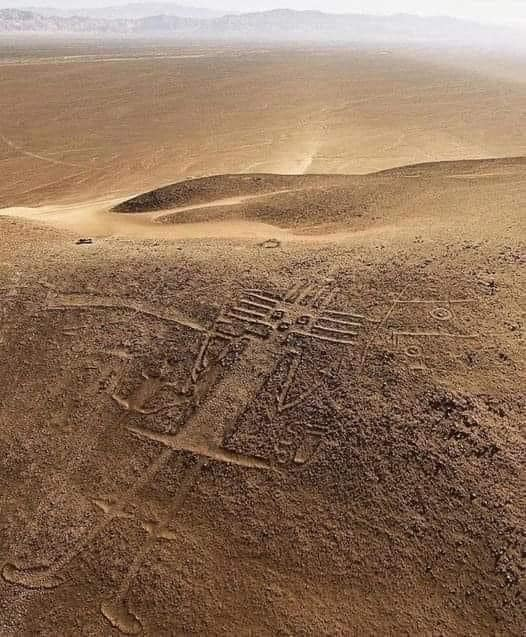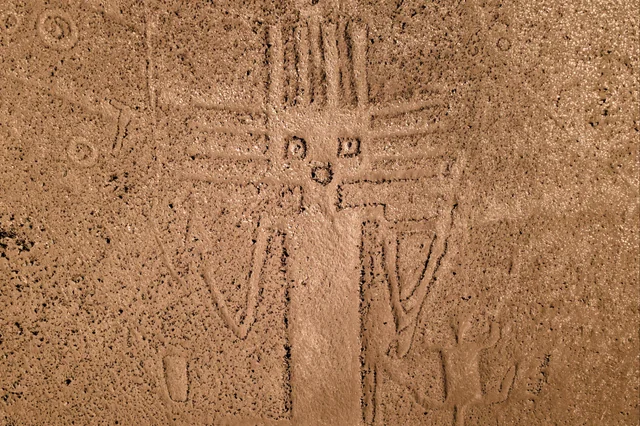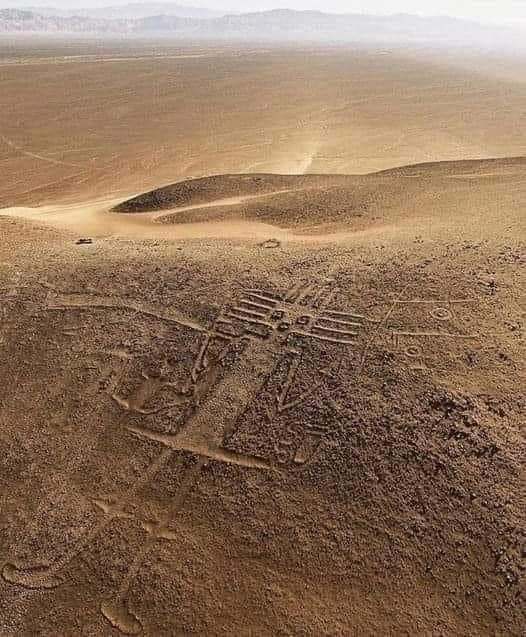The **Atacama Giant**, a massive geoglyph located in the Atacama Desert of northern Chile, is one of the most intriguing and enigmatic ancient figures in the world. Stretching over 390 feet in length, this colossal figure is considered the largest prehistoric anthropomorphic geoglyph in the world. Its origins, purpose, and the civilization that created it remain topics of debate, drawing attention from archaeologists, historians, and travelers alike.

### The Location: The Atacama Desert
The **Atacama Desert** is one of the driest places on Earth, with some areas receiving virtually no rainfall. Its extreme conditions have preserved many ancient artworks, including the **Atacama Giant**. The desert is home to over 5,000 geoglyphs, but none are as large or as puzzling as this colossal figure etched into the barren landscape.
### The Atacama Giant: What Does It Represent?

The **Atacama Giant** is believed to have been created by the ancient **Tiwanaku** or **Inca civilization** between 1000 and 1400 AD. The figure is characterized by its distinct humanoid shape, with a rectangular head and what appear to be intricate headdresses or antenna-like features, fueling speculation about its meaning. Some researchers suggest it was a deity or astronomical symbol, while others have proposed that the Atacama Giant could have served as a calendar, used to predict the movements of the moon and important agricultural cycles.
### An Ancient Astronomical Calendar?
One of the most fascinating theories about the **Atacama Giant** is that it was used as an astronomical marker. Archaeologists suggest that the various elements of the figure, particularly the “rays” emanating from its head, may have been used to track the lunar cycle. This connection to celestial bodies points to the advanced understanding of astronomy that ancient cultures in South America possessed. Farmers may have relied on the giant to predict seasonal changes, ensuring the success of their crops in the harsh desert environment.
### Symbol of a Deity or Ritual Figure?
Another interpretation of the Atacama Giant is that it represents a deity or a ceremonial figure, possibly linked to the spiritual or religious beliefs of the ancient people. The Tiwanaku and Inca civilizations were known for their rich cosmology and reverence for nature, and the giant may have been a symbol of protection or power in their belief systems. The figure’s large size and prominent placement suggest it held significant cultural or religious importance.
### The Mystery of the Antenna-Like Features
One of the most distinctive elements of the Atacama Giant is the curious “antenna-like” features extending from its head. These have led to wild speculation, including theories about ancient extraterrestrial contact. While most archaeologists dismiss these claims, the unusual design continues to spark debate. Some experts believe these features may represent ceremonial headdresses, while others think they could symbolize rays of power or light associated with the figure’s divine role.
### Preservation and Modern-Day Interest
Thanks to the arid climate of the **Atacama Desert**, the **Atacama Giant** has been remarkably well-preserved for centuries. Today, it draws visitors from around the globe who are fascinated by its sheer size and the mystery that surrounds it. The figure has become a symbol of Chile’s rich cultural heritage, standing as a reminder of the advanced civilizations that once thrived in the harshest environments.
The **Atacama Giant** is one of the most fascinating and mysterious archaeological finds in South America. Its exact purpose and meaning remain subjects of debate, but it undoubtedly reflects the ingenuity and complex belief systems of the ancient cultures that inhabited the Atacama Desert. Whether it served as an astronomical calendar, a symbol of a deity, or something entirely different, the Atacama Giant continues to captivate the imagination of those who seek to uncover the secrets of the past.
As interest in this geoglyph grows, so too does the need for preservation. The **Atacama Giant** stands as a testament to the artistic and astronomical achievements of ancient peoples, and its legacy continues to inspire awe in modern-day visitors and researchers alike.

















